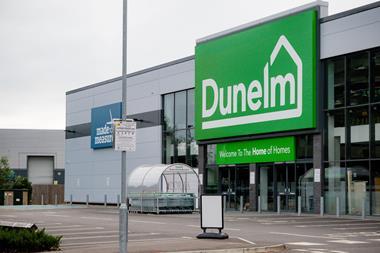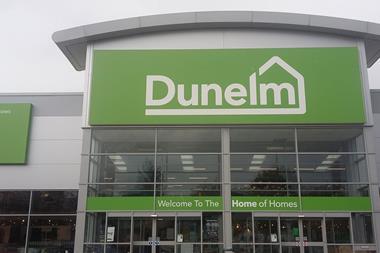Dunelm has recorded a profit rise as it transitioned from physical retailer to “proven digital-first, multichannel” retailer.

The homewares retailer reported a 45% increase in profit before tax year on year to £158m in the 52 weeks to June 26, which it said reflected “ongoing operational grip”.
While its stores were closed for more than a third of the financial year, sales grew 26% overall to £1.3bn, largely driven by digital sales which were up 115% compared with 2020.
Digital sales now make up 46% of the total, up from 27% previously, with an 8.5% increase in active customer numbers.
Dunelm has been focusing on community creation – each of its stores now has a local Facebook group, with a membership of more than 700,000 followers.
The home furnishings specialist has also laid out plans to become more sustainable, targeting a 50% reduction in greenhouse gas emissions by 2030.
Dunelm said trading for the first 10 weeks of the current financial year had been “encouraging”, particularly in response to its summer sale.
The retailer has therefore upgraded its profit outlook for this year, which it expects to be “modestly ahead” of analysts’ expectations.
Dunelm chief executive Nick Wilkinson said: “We delivered an excellent performance in FY21, despite our stores being closed for more than a third of the year, demonstrating the strength and resilience of our business model and the adaptability and commitment of our colleagues and suppliers.
“The digital investments we had made enabled us to rapidly adapt to the changing environment and deliver strong growth and an improved customer experience.
“We have renewed purpose, bold ambitions and an increased opportunity to attract more customers and grow their frequency. We aim to be our customers’ first choice for home, helping everyone to create the joy of truly feeling at home, now and for the generations to come.
“Whilst the macro-outlook remains uncertain and we are seeing some industry-wide issues such as ongoing supply chain disruption and inflationary pressures from raw materials, freight costs and driver shortages, we feel well placed to continue managing these challenges.”
- Get the latest stores news and analysis straight to your inbox – sign up for our weekly newsletter

























No comments yet